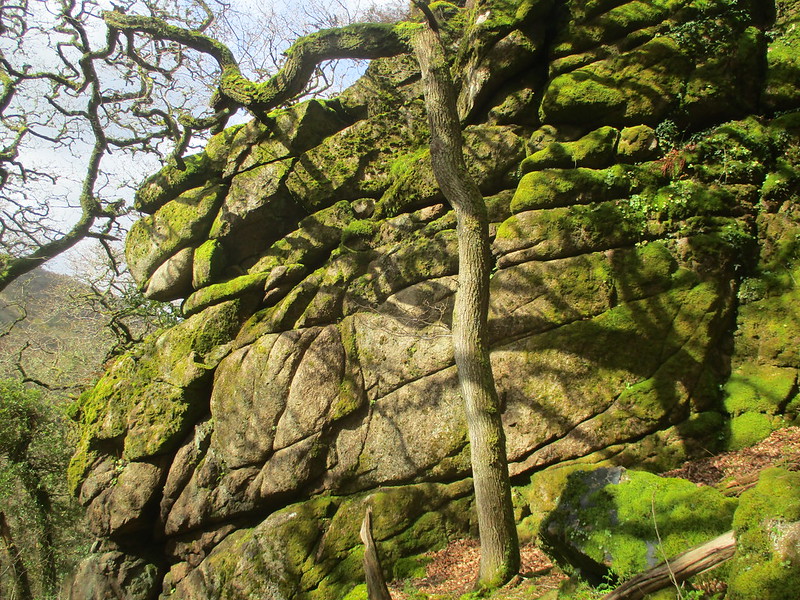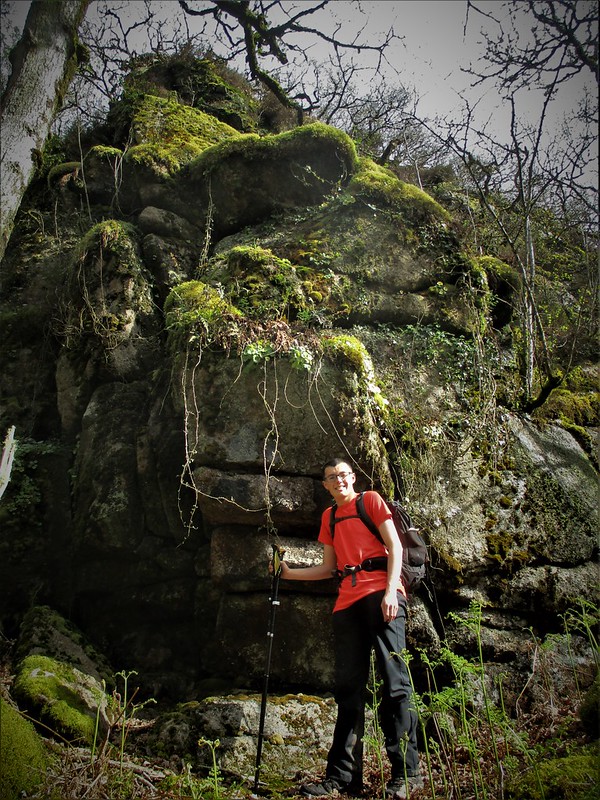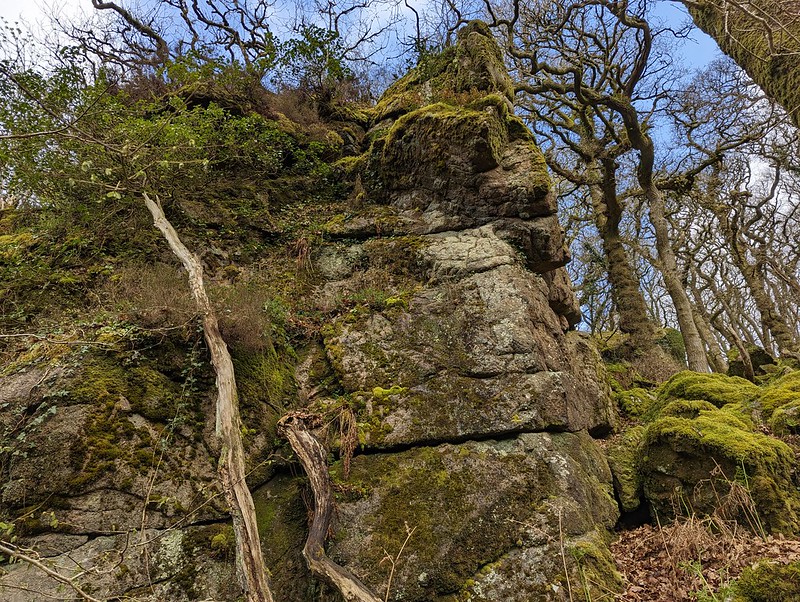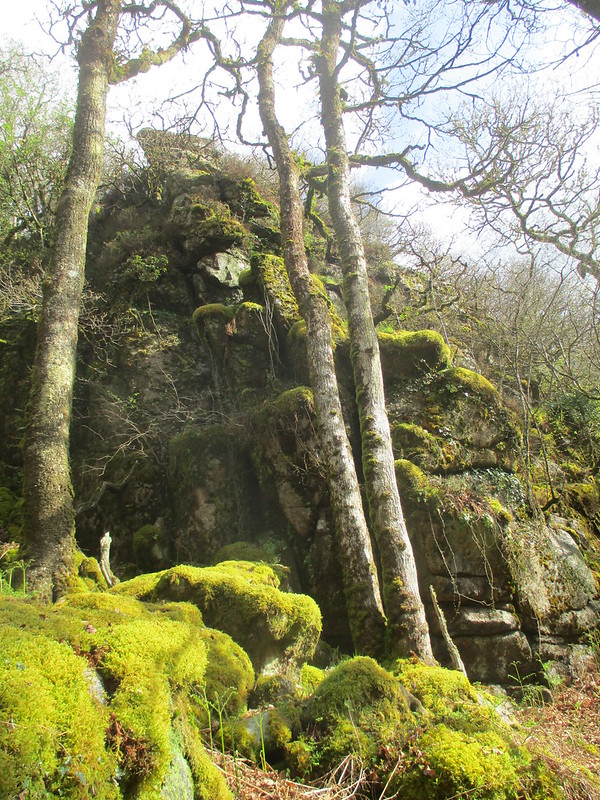TORS OF DARTMOOR
a database of both lesser- & well-known rocks and outcrops
Crow's ButtressCrows' Buttress, Crow Buttress
 Words cannot express the magnitude of the granite outcrops in Dewerstone Wood. This tremendous place is a treasure trove of huge towers of rock that are draped in moss and climbing plants. The most famous of these is The Dewerstone, which is downplayed by maps as 'Dewerstone Rock'. This, in actuality, is a tor of biblical proportions whose wooded setting ensures its full extent is rarely realised.  Roughly 150 metres north-east of the main attraction lies a smaller, but nonetheless striking, tor which is also worthy of merit. It is known locally as 'Crow's (or Crow) Buttress', a name first introduced it seems by Aileen Fox in 1963 and later used by the Bouldering community who like to climb the rock faces and favour this spot for its seclusion. The main part is massive and exceptional when seen from the east. The granite is irregularly jointed like a mosaic and credit is due to Darren Swift and Wayne Killestein who, in 2014, cleared this section to make it climbable once again after some 20 years of indifference and neglect. An awe-inspiring clitter encircles the main tor which in places mounts up to resemble miniature rock stacks. One of these at SX 54140 63982 is a distinctive tor remnant which is beautifully embellished in moss.  The west side of the Buttress is much less impressive as it is mostly obscured by hanging vegetation and its proximity to trees. The crumbling rock face here rears up towards the sky trying to poke its head above the wood, though scarcely anyone visiting the area and walking a short way beyond the car park at Shaugh Bridge will be aware of this lesser-known spot. It is possible to visit Crow's Buttress from the base of The Dewerstone making use of a narrow path that bends to the left away from the river and then ascends uphill, but this is hard to trace in places and is not for the faint-hearted. Instead, it might be simpler to drop down the slope from the Neolithic tor enclosure on Dewerstone Hill, and the Buttress can be reached with care.  An important artefact was discovered at Crow's Buttress. Fox writes: "A Bronze Age pottery cup was found in May 1960 by a rock climber, 300 yards north-east of the Dewerstone. It was found in deep leaf mould at the back of a small crevice half-way down the eastern face of the Crow's Buttress at the point where a narrow ledge of rock runs into the buttress, forming a slight platform on which a temporary shelter might have been established. The pot is squat and globose, with flat base, flaring rim and two horizontally perforated lug handles." Eric Hemery (1983) adds this extra information: "Some three hundred yards north-east of the Dewer Stone is a crag called the Crows' Buttress. Here, on a small ledge within a crevice, a climber named Michael Rabley discovered in 1960 a pottery cup of the Bronze Age covered by leaf-mould."
| ||||||||||||||||||||||||||||